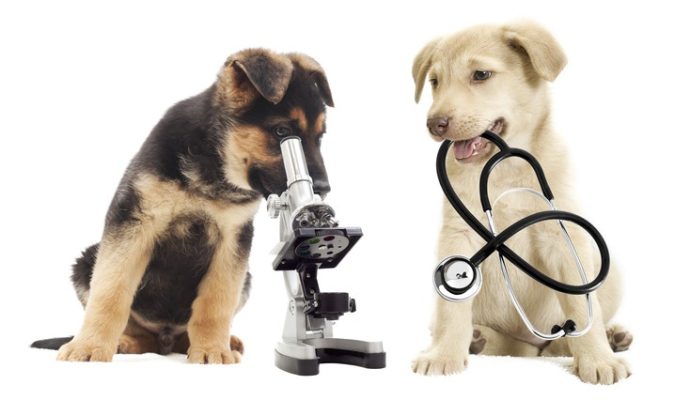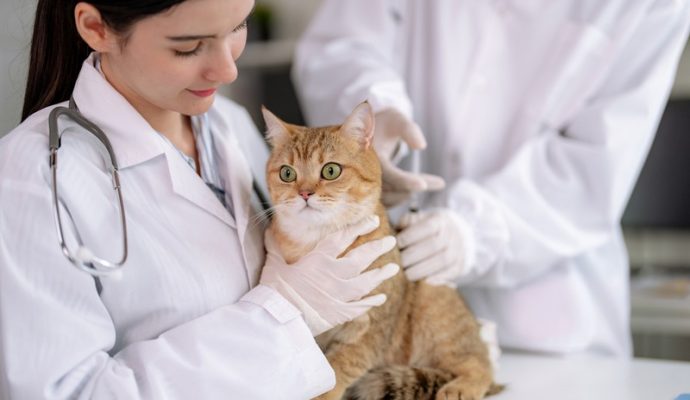Imagine your furry friend is acting a little off or showing signs of discomfort. As a pet owner, your first thought is to seek help to get to the bottom of the issue. But how exactly do veterinarians unpack these mysterious ailments that are not visible to the eye? It’s like being a detective, but instead of clues, vets have symptoms, and instead of suspects, they have potential diseases.
Let’s explore the fascinating ways in which vets diagnose internal conditions in our pets, what tools they use, and the detective work involved in keeping our companions healthy.
Signs That Suggest an Internal Issue
We often notice when our pets aren’t themselves. They may be eating less, seem lethargic, or have other changes in behavior. These signs may indicate that something is amiss inside their little bodies. Here’s what might alert you or your vet to the presence of an internal condition:
-
Behavioral changes – less playful, withdrawal
-
Appetite fluctuations – eating too much or too little
-
Unexpected weight loss or gain
-
Vomiting or diarrhea persisting for more than a day
-
Abnormal breathing or coughing
-
Visible pain or discomfort
Understanding the Diagnostic Process
When your pet is not feeling well, pet parents might rush to conclusions. It’ll likely be something they ate or a simple bug that’ll pass. While this could be the case, veterinarians don’t rely on guesswork. They follow a structured diagnostic process to pinpoint the exact cause of your pet’s distress.
Consultation and Physical Examination
The first step in diagnosing a pet is a thorough history-taking and physical examination. Vets look for any abnormalities on the pet’s body, such as lumps, swollen areas, or signs of pain. They also listen to the heart and lungs and check the pet’s temperature, pulse, and respiration rate.
The Power of Lab Tests
After a complete physical, vets often need more information. They might draw blood for a complete blood count (CBC) or a serum chemistry panel to check for various disease markers. A urine test can reveal kidney issues, urinary tract infections, and even diabetes. Fecal tests can uncover parasites or digestive problems. These lab tests are crucial as they provide a sneak peek into your pet’s internal health.
Imaging Technologies
Sometimes, a hands-on examination and lab tests only tell part of the story. That’s when veterinary clinics like Advanced Care Animal Clinic turn to advanced imaging technologies. X-rays can show problems with bones, certain foreign objects, and even large tumors. Ultrasounds are fantastic for examining soft tissues, organs, and blood flow. In some cases, MRIs or CT scans might be ordered to give a detailed view of the pet’s internal structures.
Specialized Diagnostic Methods
There are times when general methods are not enough. Veterinary medicine is a vast field, and internal veterinary medicine in Arlington, WA, has its own set of advanced techniques to delve deeper into the mysteries of a pet’s condition:
Endoscopy
This procedure involves using a camera on a flexible tube to look inside the gastrointestinal tract or other areas the vet suspects may be problematic. It’s a minimally invasive way to visually examine internal organs and even take tissue samples for biopsy.
Special Blood Tests
Certain conditions require specialized blood tests that aren’t part of the usual panels. For instance, a vet might measure hormone levels to check for endocrine disorders or perform a coagulation profile if they suspect a bleeding disorder.
Laparoscopy
A step further in minimally invasive techniques, laparoscopy involves small incisions and the use of a laparoscope to investigate or even perform surgery in the abdomen. It’s less stressful for the pet, and recovery times are usually quicker than with traditional surgery.
The Role of Biopsies and Cytology
When vets find something suspicious, such as a lump or an area of inflammation, they often need to take a closer look at the cells involved. Biopsies involve taking a small sample of tissue, while cytology is the examination of free cells or tissue fragments. These are then analyzed under a microscope by a veterinary pathologist, who can often determine the type of cells, their activity, and whether they’re indicative of a disease or cancer.
Managing the Findings and Moving Forward
After all the detective work and analysis, it comes down to what the findings suggest. If a diagnosis is confirmed, your vet will discuss the best treatment options with you. These could range from medication and special diets to surgery or even referrals to specialists.
Remember, while the journey to a diagnosis may seem long and complex, each step is critical for ensuring your pet gets the best possible care. If your pet is young and new to the household, then special attention should be given to puppy and kitten vet care, as their needs can be quite different from adult pets.
In Summary
Being attuned to the health of our pets is crucial. When something is off, it’s the combined effort of our observation and a veterinarian’s expertise that helps diagnose any internal issues. Vets possess a wealth of tools and methods, from physical exams and lab tests to cutting-edge imaging and specialized diagnostic procedures. All of these approaches come together to provide a complete picture of our pet’s health and ensure they receive the best possible care for a happy, healthy life.




